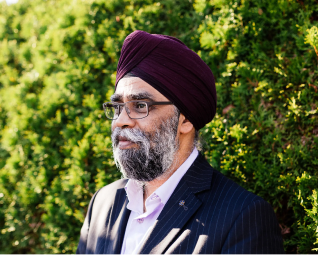People
Finding Lessons on Multiculturalism in the Experiences of Sikh Canadians
Dan Bilefsky
Since returning to Canada about two years ago, after 28 years abroad, I have been struck by our relative embrace of minorities. In my previous home in Europe, populism is bubbling, along with calls in some quarters for immigrants to assimilate — or go home.
In Canada, one group vividly embodying the “Canadian Dream” is the Sikh community, which I recently got to know better while reporting a profile of Jagmeet Singh, a practicing Sikh, who is hoping to unseat Prime Minister Justin Trudeau in the upcoming national election.
While Mr. Singh faces an uphill struggle, the rise of the Sikh community as a political force in Canada is nevertheless remarkable, and all the more so given the initial chilly reception Sikh immigrants received here.
In the spring of 1914, a steamship carrying 376 Punjabi migrants, a majority of them Sikhs, had arrived at the Port of Vancouver. After a tense two-month standoff, the British Columbia Regiment sent the ship, the Komagata Maru, back to India, where 20 Sikhs were shot dead by Indian imperial forces.
This history came up when I talked with Canada’s defense minister, Harjit Sajjan. He said that when he became Commanding Officer of the storied British Columbia Regiment some years ago, it was an emotional moment for him, the Sikh son of a Punjabi sawmill worker.
Mr. Sajjan called the Sikhs’ evolution from pariahs to government ministers a “very Canadian story.” “It shows that Canada is a country where people are judged by what they can offer — not by how they look or their ethnicity,” he said.
Nevertheless, Canada’s immigration minister, Ahmed Hussen, recently warned that in an election year, the political consensus in favor of immigration was fraying amid scaremongering that Canada was too open to immigrants.
In June, in a move to enshrine secularism, the right-leaning government of Premier François Legault of Quebec passed a law banning teachers, judges, police and other government workers from wearing religious symbols like Muslim headscarves or Sikh turbans at work.
Under the law, Mr. Sajjan, who emigrated to Canada at age 5 and made a name for himself as a police officer fighting gang crime in Vancouver, would not be allowed to serve as a police officer in Quebec unless he took off his turban.
The rise of the Sikh community is in many ways a powerful argument for Canada’s model of multiculturalism.
Although Canada has only about 500,000 Sikhs, accounting for a little more than 1 percent of all Canadians, there are four Sikhs in Mr. Trudeau’s cabinet, including Mr. Sajjan, and 18 Sikh members of Parliament, out of 338 seats, according to the World Sikh Organization.
Mr. Trudeau has boasted that he has more Sikhs in his cabinet than does India’s prime minister, Narendra Modi.
Many Sikhs encountered racism after arriving in Canada to work as laborers, and some recalled being told to take off their turbans or risk losing out on promotion.
Mr. Sajjan said that when he joined the military in 1989, and several superiors told him his turban and religion could get in the way, he thought of quitting. “But my father said if you quit now, other minorities who look different will be labeled a failure.” He stayed and graduated top of his class.
Over tea at his house in Vancouver, Ujjal Dosanjh, a former premier and attorney general of British Columbia, who rose from mill worker to become a federal minister of health, told me that, as a boy in India, he was not allowed to cut his hair — one of the five K’s, or symbols of faith, that baptized Sikhs are expected to wear at all times.
By the time he emigrated to Canada in the early 1970s, he had removed his turban. “The vast majority of Sikhs of my generation took off their turbans and shaved their beards in order to fit in here.”
Mr. Dosanjh said the community’s worst moment came on June 23, 1985, when an Air India flight traveling from Toronto to India exploded in the air, killing 331 people. The worst mass murder in Canadian history, the attack was planned from Vancouver by a group of Sikh separatists led by a preacher, Talwinder Singh Parmar.
“Air India made other Canadians feel that all who had turbans and beards were terrorists,” Mr. Dosanjh said, warning against the perils of extremism. He also stressed that “the violent eruptions in the Sikh community were a vocal fringe.”
As the Sikh community has prospered, Betty Hayer, a community activist, said her generation felt more confident about their Sikh identity than some of their parents.
“Our mom got married in a white gown,” she said. “I got married in a sari.”
[Courtesy: The New York Times. Edited for sikhchic.com]
August 09, 2021



